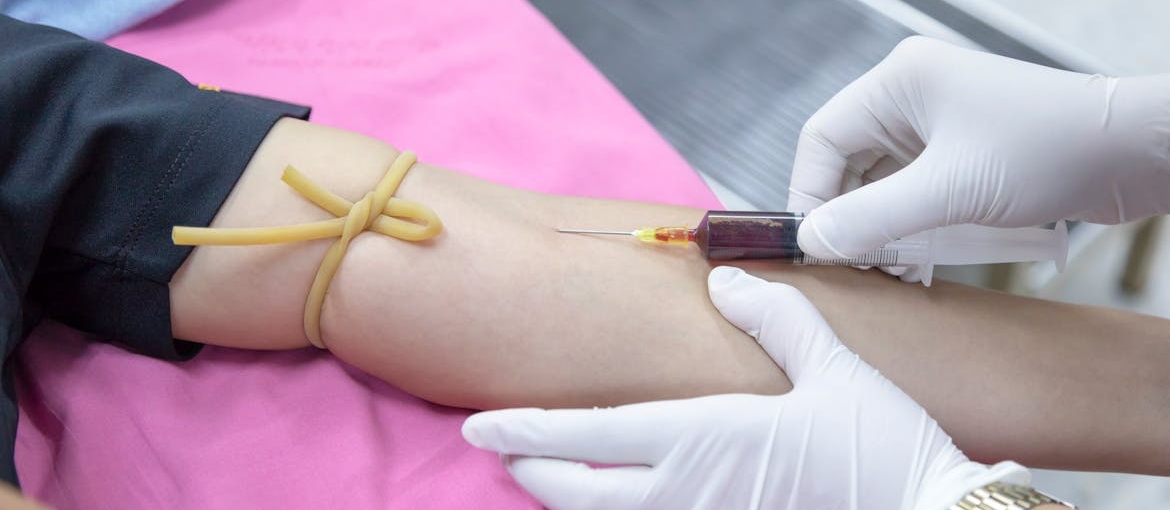Many people rely on prescription painkillers to manage pain after surgery, injury, or illness. But sometimes, these medications stay in your body longer than expected. Knowing how long do prescription painkillers stay in your system can help you stay safe, avoid side effects, and make better choices about your health. The time it takes to clear these drugs depends on many factors, like your metabolism, dosage, and how often you use them. Some painkillers leave the body in a day, while others can take much longer. If you’re worried about detection times, withdrawal, or possible dependence, learning how your body processes these medications can make a big difference. This knowledge can help you talk openly with your doctor and take steps toward safer pain management
Understanding How Prescription Painkillers Work in the Body
Prescription painkillers affect how your brain and nervous system sense and respond to pain. They block pain signals and release chemicals that make you feel relaxed or even euphoric. This relief can quickly turn into dependence if use continues without proper supervision. Many people wonder how long does it take for a pain killer to be out of your system, but the answer depends on several factors.

The liver breaks down most painkillers, and the kidneys remove the rest. Some drugs act for just a few hours, while others stay active for much longer. When your body becomes used to them, stopping suddenly can cause withdrawal. That’s why medical support and monitoring are so important during detox and recovery.
Factors That Influence How Long Painkillers Stay in Your System
Many things affect how long painkillers remain in your body. Your health, dosage, and habits all play a role. People often ask how long does it take for a prescription medicine to get out of your system, but there isn’t a single answer. Each person’s body reacts differently. Here are some common factors that influence detection times:
- Metabolism rate: Faster metabolism removes drugs sooner.
- Age and weight: Older adults or heavier people may process medications slower.
- Frequency of use: Regular use builds up in tissues over time.
- Hydration and nutrition: A healthy diet helps your body detox faster.
- Type of painkiller: Long-acting medications take longer to leave your body.
Safe Detox and Treatment Options for Painkiller Dependence
Getting help for painkiller dependence takes courage, but it’s one of the most important decisions you can make. The right treatment approach can help you safely manage withdrawal, rebuild your health, and find lasting stability. Knowing how long do prescription painkillers stay in your system helps medical staff create a plan that fits your needs. Treatment programs vary, but each focuses on helping you regain balance, control, and confidence during recovery.
Medical Detox: Managing Withdrawal Safely
Medical detox gives your body a safe environment to remove drugs while managing uncomfortable symptoms. At trusted detox centers in WV, medical professionals monitor you 24/7 and provide medications to ease withdrawal. Since how long do prescription painkillers stay in your system affects withdrawal length, each plan is adjusted to your body’s needs.
Detox is the first step toward recovery, not a complete solution. It helps your body reset so you can move forward into therapy and long-term care. Having medical support during this stage lowers risks and helps you stay strong throughout the process. With compassion and guidance, detox becomes the foundation for a healthier, addiction-free future where recovery feels possible every day.

Medication-Assisted Treatment (MAT) Programs
Medication-assisted treatment combines approved medications with therapy to reduce cravings and prevent relapse. People who complete detox often start MAT to stabilize their recovery. These programs are especially effective for opioid and benzo detox, providing safe medications like Suboxone or methadone under close supervision. The treatment is customized, taking into account how long do prescription painkillers stay in your system, to ensure proper dosing.
MAT allows the body to adjust gradually while you focus on therapy, rebuilding daily structure, and emotional health. Many find that medication support gives them the clarity to rebuild relationships and manage responsibilities again. It’s not a shortcut—it’s a proven medical approach that supports long-term healing and helps prevent future relapse.
Inpatient vs. Outpatient Painkiller Rehab Programs
Finding the right program depends on your lifestyle, needs, and how serious your addiction is. Long term drug rehab WV programs provide structure, therapy, and medical supervision in a residential setting. Outpatient programs give you flexibility to live at home and continue working while attending therapy sessions.
The decision often depends on how long do prescription painkillers stay in your system, as longer retention times may require closer monitoring. Both types focus on healing, education, and relapse prevention. Many people start with inpatient care for stability, then shift to outpatient support when ready. Choosing a treatment setting that fits your goals increases your chance of lasting success and makes recovery more sustainable over time.
Therapy and Support for Long-Term Recovery
Therapy helps you heal emotionally while learning to manage triggers and cravings. One approach, motivational interviewing for substance abuse, helps people strengthen their commitment to change. Therapists guide you to identify what motivates you, so recovery feels personal and achievable.
Over time, therapy helps you rebuild trust, improve communication, and process emotions that contributed to drug use. Group and family therapy are also important, as they repair relationships and create a network of understanding. Long-term recovery takes patience, but consistent therapy builds resilience and clarity. It helps you focus on a future that isn’t defined by painkillers but by progress and renewed purpose.

Getting Professional Help for Painkiller Addiction
Reaching out for help can feel scary, but it’s often the most powerful choice you’ll ever make. Many people delay treatment out of fear, but professional care makes recovery safer and more manageable. Learning how long do prescription painkillers stay in your system can help you understand what to expect and take control of your healing. Let’s look at how to recognize the right time and path for treatment.
When to Seek Treatment for Painkiller Misuse
It’s time to ask for help when you feel dependent or struggle to cut back. At a professional drug rehab WV, medical teams create a treatment plan tailored to your needs. They assess your health, track your usage history, and consider how long do prescription painkillers stay in your system to plan detox and therapy.
Seeking treatment early prevents physical and emotional damage. Warning signs like mood swings, fatigue, or missing prescriptions mean your body needs care, not shame. The sooner you act, the easier it becomes to regain balance and avoid long-term harm.
What to Expect During the Recovery Process
Recovery is a gradual process that focuses on healing both the body and mind. At a trusted rehab center in Marietta OH, you’ll find structure, therapy, and medical support designed for real progress. Your program may start with detox, continue with therapy, and lead to aftercare for ongoing stability.
Knowing how long do prescription painkillers stay in your system helps guide treatment duration and expectations. Every step aims to help you feel better physically and emotionally. With professional care, you’ll rebuild confidence and learn healthy coping skills that last long after rehab ends.

How to Choose a Rehab Center That Fits Your Needs
Choosing the right rehab can change your life. Look for centers that match your medical needs, lifestyle, and financial situation. Many programs accept humana rehab coverage, making treatment more accessible. Consider location, staff experience, and therapy options before deciding.
A good rehab should provide medical detox, therapy, and aftercare planning. Ask about staff-to-patient ratios and individualized treatment plans. Transparency and compassion are key indicators of quality care. The goal is to find a place where you feel safe, supported, and understood throughout recovery.
Support Groups and Aftercare for Sustained Recovery
Recovery doesn’t end when treatment does. The weeks and months after rehab are when real-life challenges return, and that’s when support matters most. Aftercare programs and community groups give you the structure and connection needed to stay on track. Being part of a supportive group means never facing those hard days alone. These options can help you maintain motivation and continue healing long after formal treatment ends:
- 12-step meetings: Offer structure, connection, and shared motivation.
- Peer support networks: Create ongoing encouragement through others’ success stories.
- Family counseling: Strengthens communication and rebuilds trust at home.
- Alumni programs: Keep you involved in the recovery community.
- Online support groups: Provide flexible access to help at any time.

The Dangers of Misusing Prescription Painkillers
Painkillers are effective when taken correctly, but misuse can lead to addiction and health problems. Overusing them changes how your brain handles pain and reward, creating dependency. Mixing drugs increases risk even more. The dangers of combining alcohol and prescription painkillers include slowed breathing, overdose, and even death. Taking more than prescribed or using someone else’s medication can damage your liver, kidneys, and heart.
Over time, tolerance builds, leading you to take higher doses just to feel normal. Misuse can also cause emotional instability, anxiety, and memory issues. If you’re struggling to control your use or notice withdrawal symptoms when you stop, it’s time to reach out for help. Safe medical treatment can help you recover and restore your health.
Detection Times for Common Prescription Painkillers
Drug tests can show traces of painkillers long after the effects fade. People often ask how long will you test positive for pain pills, but it depends on the drug, dose, and testing method. Short-acting painkillers leave sooner, while long-acting ones stay much longer. Each testing method looks for traces in different ways. Here’s a look at general detection times:
- Urine tests: Detect painkillers for 2 to 7 days.
- Blood tests: Show presence for up to 24 hours.
- Saliva tests: Detect recent use for 1 to 3 days.
- Hair follicle tests: Can reveal use for up to 90 days.
- Type of painkiller: Opioids like oxycodone and hydrocodone often linger longest.

How Long Prescription Painkillers Stay in Different Parts of the Body
Your body processes painkillers in stages, and each system clears them at a different pace. People often wonder how long does it take for painkillers to wear off, but it varies by drug and body type. Some painkillers leave the bloodstream quickly but remain in hair or fat cells for weeks. Understanding how different tests detect these substances helps you make safer choices. Here’s how long they may stay in various parts of the body:
- Bloodstream: Usually cleared within hours to one day.
- Urine: Detectable for several days depending on dosage.
- Saliva: Can show use for up to three days.
- Hair follicles: May retain traces for up to three months.
- Liver and fat tissues: Store some substances much longer than others.
Reach Out for Support—You Don’t Have to Do It Alone
Knowing how long do prescription painkillers stay in your system can help you protect your health and make better choices. Each person’s body works differently, so what leaves one person’s system fast may take longer for another. If you’ve been using painkillers for a while and notice changes in your mood, sleep, or energy, it might be time to reach out for help. Talking to a medical professional can give you the answers and support you need. Safe detox programs and treatment options are available if dependence has started to form. You don’t have to face it alone—help is always within reach. Taking that first step toward understanding your medication and recovery can make a real difference in how you feel and heal.



